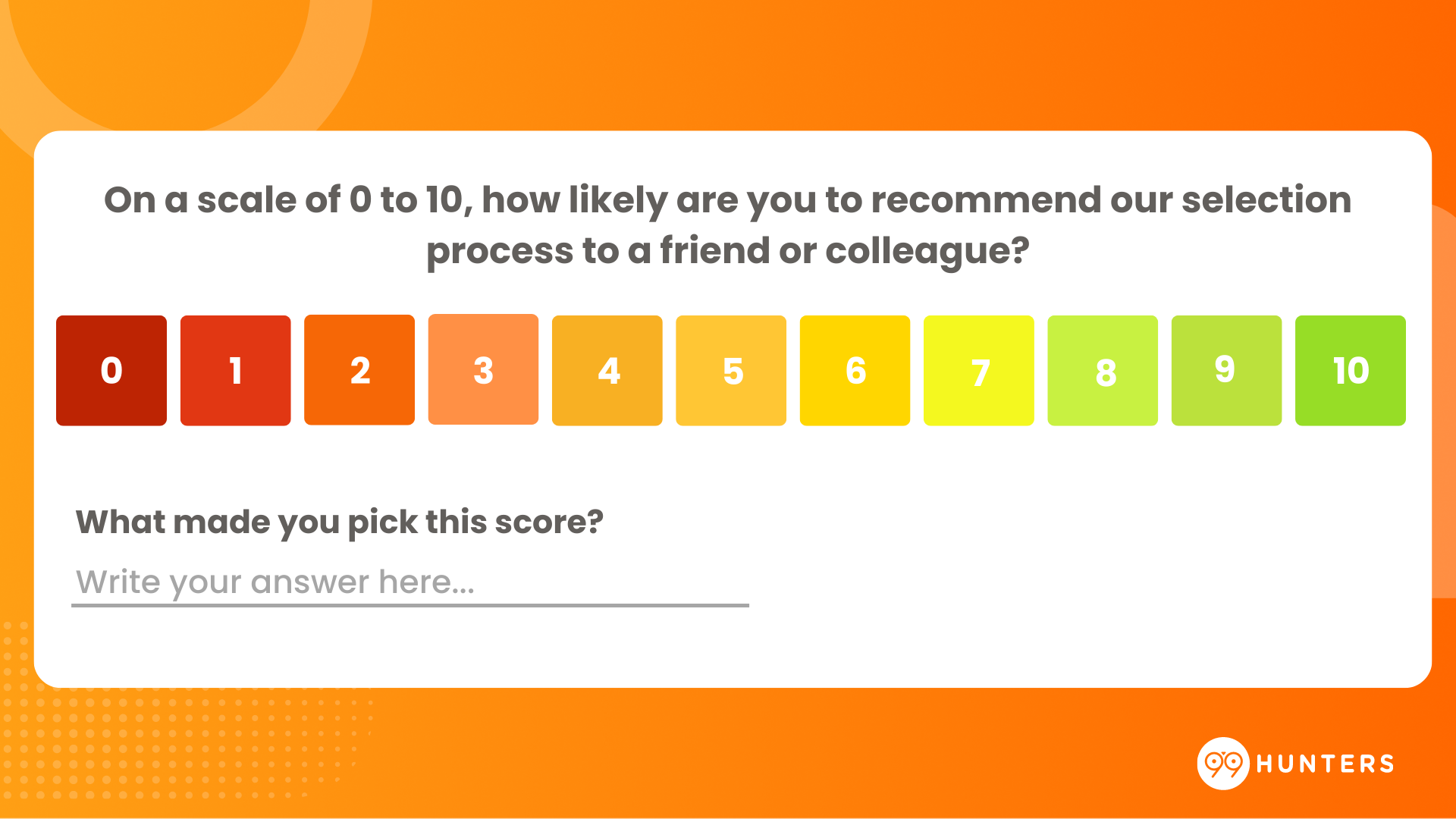NPS in the candidate experience: how important is it?
When we talk about selection processes, there are some almost mandatory steps: screening, application of tests, interviews. But have you ever thought about evaluating the experience of the candidates involved?
The NPS is an indicator that can help you identify gaps in your selection process and improve the experience for everyone involved.
What is NPS?
It is a methodology of indicators used to measure satisfaction and even loyalty of customers to a particular brand or service. After its application, the results are divided into three: detractors, neutrals and promoters.
When we use this methodology in a selection process, it serves to understand and qualify the experience of the candidates involved and identify possible flaws in this journey.
What is the importance of NPS? How does it help me?
Let's imagine the scenario: during a post-selection process analysis, you noticed that many talents were stuck in the testing phase and you can't understand what happened. In this case, the NPS could be the key indicator that would solve this problem!
In it, candidates could alert you that your process is with too many tests or even too advanced level tests for that vacancy. That way, you could gain valuable insights and recalculate the route to success in a future selection process.
It is all about taking the feedback from the stakeholders and using it to your advantage! But how do they affect your business and why is it so important?

Why does the candidate's experience matter?
Searching for an opportunity in the job market is stressful in itself, people on this journey usually go through enough stress in their daily lives, and with the arrival of LinkedIn, making the selection processes more friendly to the talents involved is no longer just empathy, but a business strategy.
Candidates who go through a good or extraordinary experience (and those who go through a not so good one), do that word-of-mouth marketing and spread an image of your company. And let's agree that we want it to be positive, right?
Today, we all run the risk of a major exposed post on LinkedIn that can directly affect our Employer Branding, and ensuring a positive experience for people applying can be the first step to avoiding this unpleasant situation.
Also, people who are satisfied with the experience are more likely to apply again for an open position in the future.
NPS in practice
After the survey is applied, the candidates involved are classified and those who answered 9 or 10 are considered promoters: they are satisfied to the point of referring friends and want to continue the relationship with the organization.
Those who answer 7 or 8 are considered neutral: they do not affect performance and are not engaged with the organization. They are generally satisfied, but have reservations about making any recommendations.
And finally, those who responded 0 to 6 are considered detractors: they are dissatisfied and did not have a good experience. They can damage your organization's image in the marketplace.
After identifying the total scenario (the percentage of promoters, neutrals and detractors), you must apply a formula to get the result in your NPS:
% promoters - % detractors = NPS
The result will always vary between -100 and 100.
Let's put this into numbers: 200 candidates answered your survey.
- 140 promoters;
- 40 detractors;
- 20 neutrals;
So we have the following percentages:
- 140 promoters = 70%
- 40 detractors = 20%
- 20 neutrals = 10%
Now, let's subtract the promoting and detracting percentage, ignoring the neutral one:
70% promoters - 20% detractors = 50%
Since NPS is not a percentage, your final NPS score is 50.
The NPS rating zone works like this:
- -100 a 0: critical situation
- 1 a 50: many points for improvement
- 51 a 75: good, but has potential for improvement
- 76 a 100: excellent
How and when to send the NPS survey?
Since we are talking about a selection process that is often played by e-mail, this may be the best communication channel to apply your survey.
Ideally, you should send it after your recruitment and selection process is over!
Which questions should I ask?
The NPS is versatile and was designed to have only two questions: one quantitative and one qualitative. For this reason, it is quick to answer and can be applied to any business model or service.
The first question always has the same purpose: to identify if the person is a promoter, neutral or detractor.
- On a scale of 0 to 10, how likely are you to recommend our selection process to a friend or colleague?
You can also ask a follow-up question for feedback:
- What made you pick this score? (essay and optional)
It is important to remember that: essay and non-mandatory questions may have a lower buy-in.

Are there tools that do this?
There are some tools and companies that can facilitate the application of this methodology:
Now that you have learned a little more about NPS, you have no excuse not to put this methodology into practice, huh?
INDEX
🔸What is NPS?
🔸What is the importance of NPS? How does it help me?
🔸Why does the candidate's experience matter?
🔸NPS in practice
🔸How and when to send the NPS survey?
🔸Which questions should I ask?
🔸Are there tools that do this?
Share this
You May Also Like
These Related Stories

How does candidate experience impact your business?

Employer branding: what it is, benefits and initiatives to get started

No Comments Yet
Let us know what you think